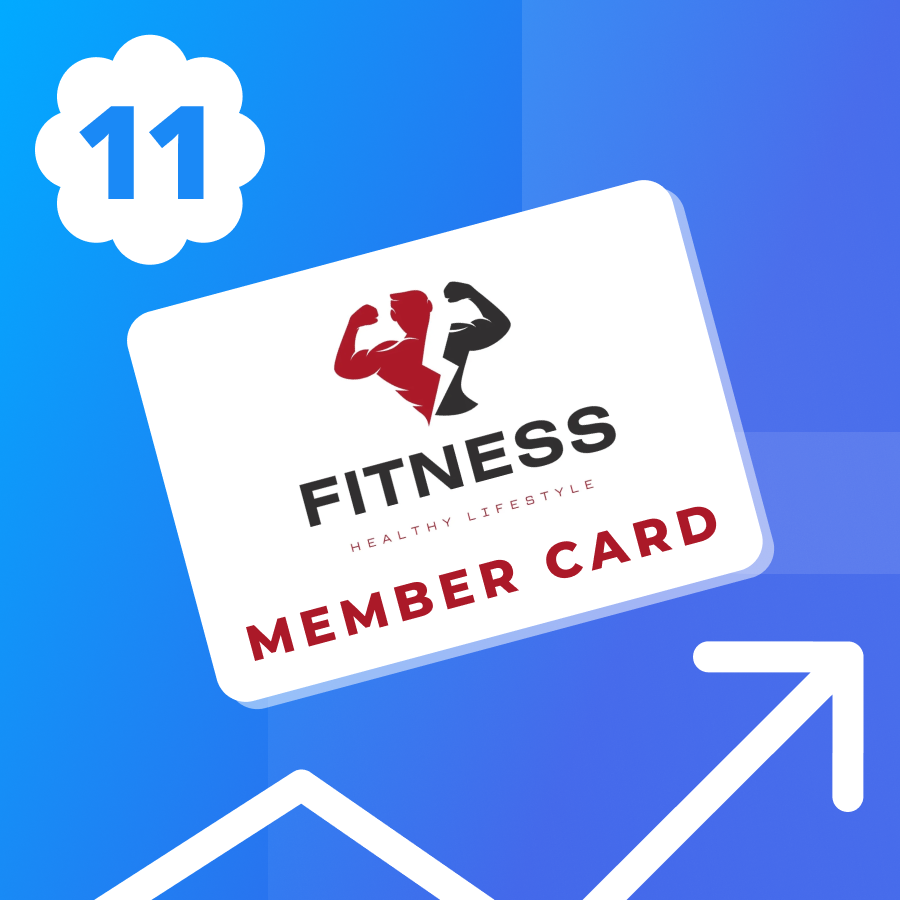Diversifying Your Gym’s Income Beyond Membership Fees

Every gym owner knows the heartbeat of their business lies in membership subscriptions. However, relying solely on membership fees can leave gyms vulnerable to fluctuating market trends and economic downturns.
Diversifying your services will allow you to unlock new revenue streams that increase your profitability and enrich the member’s fitness journey. Additional services boost your bottom line and deepen your members’ commitment to their health and your gym as a community hub.
The Value of Additional Services
When members find a one-stop solution for their fitness goals, their reliance on your gym increases, leading to higher satisfaction and loyalty. This holistic approach to fitness can turn occasional visitors into dedicated members who see your gym as an integral part of their lifestyle.
Increasing Revenue Beyond Memberships
While membership fees will likely remain your core revenue source, additional services can provide a stable income flow that complements this. For instance, offering personal training packages or selling branded gym apparel can generate significant earnings. These services and products have higher profit margins and can be marketed to existing members and the broader community, widening your gym’s appeal.
Enhancing Your Gym’s Brand and Community
Introducing unique services can also elevate your gym’s brand, setting you apart as a leader in the fitness industry. It shows your commitment to innovation and meeting your members’ diverse needs.
Roadmap to Implementation
- Market Research: Begin by understanding your members’ needs and preferences. Surveys, feedback forms, and informal conversations can reveal what additional services they desire.
- Feasibility Study: Assess the financial and operational implications of introducing new services. This includes costs, required space, potential ROI, and staffing needs.
- Pilot Programs: Test new services on a small scale to gauge interest and viability. This approach allows for adjustments based on real-world feedback.
- Marketing and Promotion: Once you fully implement a service, create a marketing plan to promote it to your members and the wider community. Highlight the benefits and any special introductory offers.
- Continuous Evaluation: Monitor the performance of your new services, including member uptake, satisfaction, and profitability. Be prepared to tweak your offerings based on this feedback.
Nutrition Counseling: A Gateway to Holistic Fitness
Nutrition counseling directly supports members in their health journey, providing them with the tools and knowledge to make informed dietary choices that complement their workout regimes.
Integrating Nutrition Services
- Certification and Expertise: Hiring certified nutritionists or dietitians. These experts can offer personalized dietary plans, monitor progress, and adjust recommendations based on individual member needs.
- Customized Programs: Offer tailored nutrition plans that align with various fitness goals, whether it’s weight loss, muscle gain, or improving overall health.
- Workshops and Seminars: Organize regular nutrition workshops and seminars to educate your members about healthy eating habits, meal planning, and the importance of nutrition in fitness. This can also be a great way to introduce the service to members.
- Digital Counseling Options: For greater flexibility, consider offering virtual nutrition counseling. This can particularly appeal to members with tight schedules or those who prefer remote services.
Massage Therapy: Enhancing Recovery and Retention
Massage therapy is another ancillary service with the potential to enhance member satisfaction and retention significantly. It addresses one of the critical aspects of fitness—recovery.
Setting Up a Massage Therapy Service
- Hire Qualified Therapists: Ensure that the massage therapists employed at your gym are licensed and understand sports-related massage techniques that can aid in recovery and prevent injuries.
- Create a Relaxing Space: Dedicate a quiet, comfortable area within your gym for massage therapy. This space should be conducive to relaxation, with appropriate equipment and a calming ambiance.
- Flexible Booking Options: Provide easy booking options for members to schedule massages around their workouts. Online booking systems can streamline this process and enhance member convenience.
- Integration with Other Services: Offer massage therapy as a standalone service or as part of a package with other services such as personal training sessions or nutrition counseling. This can encourage members to try multiple services.
Retail Operations: Selling Fitness Merchandise
Launching a retail operation within your gym can tap into the brand loyalty of your members, offering them a convenient way to purchase fitness-related products. From apparel and supplements to workout gear, selling branded merchandise can significantly boost your gym’s revenue.
Tips for Launching Your Retail Operation
- Selecting the Right Merchandise: Choose products that resonate with your gym’s brand and members’ needs. High-quality, branded apparel, durable workout accessories, and reputable supplements are often popular choices.
- Pricing Strategies: Set competitive prices that offer value to your members while ensuring a healthy profit margin for your gym. Consider exclusive member discounts to encourage purchases.
- Promotion and Display: Create attractive displays for your products and promote them through your gym’s branded app, social media channels, email newsletters, and in-gym signage. Highlighting new arrivals and best-sellers can drive interest and sales.
Workshops and Specialized Classes: Building Community and Expertise
Events offer unique opportunities for members to deepen their knowledge, learn new skills, and connect with others who share similar fitness goals.
Implementing Workshops and Specialized Classes
- Identifying Topics of Interest: Start by surveying your members to discover which topics interest them the most. Whether it’s nutrition, advanced workout techniques, mindfulness in fitness, or injury prevention, tailoring your workshops to member interests ensures higher engagement.
- Engaging Expert Instructors: For each workshop or class, bring in experts who are knowledgeable and passionate about their subject matter. This could include external guest speakers or leveraging the expertise of your existing staff.
- Creating an Engaging Environment: Make these events more than just learning sessions. Incorporate interactive elements, Q&A sessions, and practical demonstrations to keep attendees engaged and motivated.
- Marketing and Promotion: Utilize your gym’s social media platforms, email lists, and in-gym advertising to promote upcoming workshops and classes. Offering early bird discounts or exclusive member pricing can boost early sign-ups.
Online Content: Subscription Services and Virtual Training
- Quality Content: Invest in creating high-quality, engaging content that aligns with your gym’s brand and member interests. This could range from workout videos and fitness challenges to nutritional advice and mindfulness sessions.
- Subscription Models: Consider offering this content through a subscription model, providing a steady income stream and offering members exclusive access to valuable resources.
- Leveraging Technology: Utilize user-friendly platforms that allow for easy access to your content. Ensure that your online offerings are accessible on various devices, enhancing the convenience for your members.
- Promoting Digital Offerings: Highlight the benefits of your online services to your gym members and on your social media channels. Offer free trials or special promotions to encourage uptake.
Partnership and Sponsorship Opportunities
Partnerships and collaborations can open new marketing channels for your gym and enhance your gym’s community presence and brand visibility.
- Identifying Potential Partners: Look for businesses and brands aligning with your gym’s values and members’ interests. These could range from local health food cafes to fitness equipment brands.
- Negotiating: Work out agreements that offer value to both parties, such as sponsored events, co-branded merchandise, or member discounts.
- Promoting Partnerships: Utilize your gym’s marketing channels to highlight these partnerships, creating a buzz among your members and attracting attention from potential new members.
Implementing Your New Services
Diving into these new service areas requires careful planning and execution. Start small, measure your success, and be ready to adapt based on feedback and performance. Engage your members throughout the process, seeking their input and informing them of new offerings. With a strategic approach, these additional services can diversify your income and strengthen the bonds within your gym community, creating a vibrant and supportive environment for everyone.



